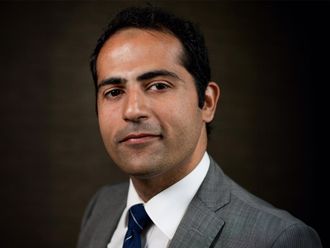The growing failure of the European monetary union can't be measured by superficial yardsticks such as the number of tiny euro-area economies at risk of meltdown or of monthly turbulence in currency markets. The main development has been the dashing of hopes for monetary stability.
The euro crisis isn't over and confidence in the European Central Bank has faded. The ECB now presides over a bloated balance sheet that has expanded to about 2 trillion euros ($2.54 trillion) from 1.084 trillion euros in June 2006 and camouflages the massive creation of monetary reserves.
When the economic recovery accelerates, the ECB — crippled by a near-insolvent balance sheet — will fuel asset bubbles by keeping interest rates too low for too long. The next business cycle will be both violent and short. Belief in European monetary stability is now dead.
Let's go back to the idealist vision at the launch of the euro. The promise was a zone of monetary stability in Europe, insulated, to a large degree, from the raging monetary storms, including most notoriously the Great Inflation of the late 1960s and 1970s, but also featuring a sequence of credit- and asset — market explosions in the 1980s and 1990s.
The visionaries imagined that the ECB would be the reincarnation of Germany's Bundesbank, bringing the benefits of a hard currency to euro-area citizens. And all of this could happen without the economically strong member countries having to support the weak.
Such idealism had already started to fade when the credit quakes sounded in 2007. The drama of the sovereign-debt crisis this year finally demonstrated that idealism had been an illusion. It wasn't just a question of German taxpayers waking up to the huge bills for monetary union, but the deep flaws of the ECB and its monetary framework became all too apparent.
Panic provision
If it hadn't been for the monetary ease of 2003-2006 and then the panic provision of mega-liquidity in the following two years, there may not have been a sovereign-debt bubble.
Top ECB officials don't admit past mistakes any more than their counterparts at the Federal Reserve do. That is a great pity. Instead, the ECB has made much over the years of the euro's strength and rapid internationalisation, maintaining that this demonstrates monetary success. Exchange rates, however, are determined by relativities, not absolutes. The euro is in competition not with a dollar administered by libertarian monetarist ideologues, but by a Fed packed with neo-Keynesians and officials with inflation targets.
Last year, the euro surged as Fed Chairman Ben Bernanke planted a giant monetary time bomb known as quantitative easing on the rails of the US economy. Over the past few months, the Fed has been deliberating on whether to add to the size of the bomb, and so the euro has rebounded from its crisis low point.
The ECB claims that, unlike the Fed, it hasn't resorted to mega money-printing. Yes, in the depths of the sovereign-debt crisis this year it went on a mini-buying spree to support periphery-country debt (and there may be more to follow as the crisis unfolds), but the funds employed were "sterilised" by money-market operations.
The ECB issued short-term certificates of deposit at auction to banks with surplus liquidity. And the ECB has used similar means to offset much greater collateralised liquidity through cheap lending in recent years. The total sterilisation operation, however, is of dubious quality.
As the euro-area economy rebounds, with Germany well in the lead among the large countries, banks will eschew such paper in favour of exploiting new high-margin lending opportunities. At that point, the ECB might consider selling its certificates to non-bank investors so as to prevent an explosion of excess reserves.












